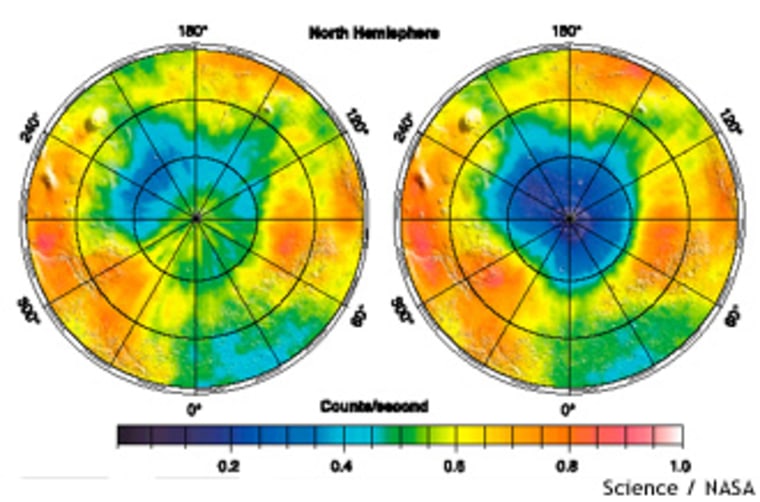The Martian north pole is honeycombed with frozen water, exceeding the ice deposits detected on Mars’ southern end and raising hopes of finding traces of past microscopic life, astronomers say.
The northern ice lies just below the Red Planet’s surface, according to Bill Boynton of the University of Arizona, part of a team of U.S. and Russian scientists who made the discovery.
What they actually detected was hydrogen, which combines with oxygen to form water, but they spotted so much hydrogen that it could not have been anything else, Boynton said in a telephone interview.
“There’s just so much of it (hydrogen), it can’t be present in any other form,” Boynton said. He explained that small amounts of water are normally present in rocks and soil on Earth, but on Mars’ north pole, “we’re seeing amounts that are on the order of 80 to 90 percent ice by volume.”
The ice is uniformly distributed throughout the Martian soil, he said.
“What we think ... is you could go almost anywhere in these high northern latitudes and dig down several inches (centimeters) to a foot (30 centimeters) or so and find ice there for you,” Boynton said.
This is good news for those who believe life might have been present on Mars in the past, since liquid water is a prerequisite for the development of Earth-type life.
If Mars was warm and wet at some point, as many astronomers think, the current wide distribution of ice would indicate a large region where water might have been capable of supporting life.
The U.S.-Russian team, whose findings were published in the journal Science, used data from the Mars Global Surveyor and Mars Odyssey, two NASA vehicles orbiting Mars.
Mars Odyssey first found evidence of subsurface ice around the Martian south pole about a year ago. The scientists found about one-third more ice in the northern polar region than in the south.
